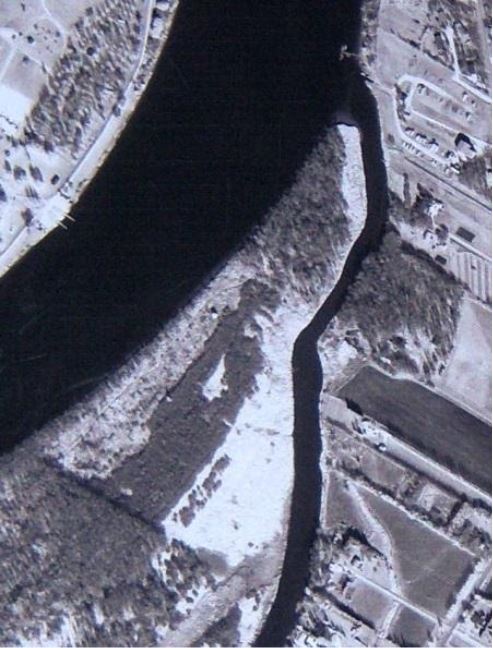The most famous steamship to travel the Red River was called the SS Colvile. It was considered one of the greatest ships that the Hudson’s Bay Company had ever constructed. When the HBC decided to build a harbour in the East Slough at East Selkirk, they decided to name the harbour after this great vessel. The HBC vessel Colvile carried Lord and Lady Dufferin during their tour of Manitoba in 1877.
In 1878, when a railway connection was built to East Selkirk, the HBC decided to develop the East Slough, on the east side of the river, as a warehouse and trans-shipment point for goods destined for the Saskatchewan River. Originally, the Colville Landing was known as Colvile Landing (with one l), named after the SS Colvile. The ship, in turn, had been named for two successful past administrators of the Company, Andrew Wedderburn Colvile (Deputy Governor of the HBC), and Eden Colvile (Governor of Rupert’s Land).

Mr. David Douglas was the contractor for the railway. He constructed the two-mile spur-line to Colville Landing in record-breaking time, beginning on May 12, 1880 and finishing on July 20, 1880. In 1881 the HBC created the harbour of Colville Landing, with a shipping wharf and warehouse in the East Slough.
Soon after, the Hudson’s Bay Company established a very large store at this location. The Manitoba Weekly Press described the building as a, “large and handsome store… [it is] one of the finest and largest in the Province outside of Winnipeg, and is fitted up in elaborate style.”
The location of this cache was chosen specifically as the crossing point for the two-mile spur line over Cooks Creek, as it continued to the East Slough.
Crossing Cooks Creek on the way to the East Slough
East Slough geocache site is located near East Selkirk, Manitoba, Canada at N 50º 08.179´ latitude and W 96º 51.342´ longitude. If you find the geocache and scan the QR code inside of it, it brings you here to learn more. Watch all of our videos on our YouTube Channel. Other heritage content can be found on our Red River North Heritage Youtube channel.
Transcription:
Lord Dufferin was the third Governor General of the Dominion of Canada. The following is taken from Lady Dufferin’s journal of their 1877 tour through Manitoba:
The S.S. Colvile that was to take them around Lake Winnipeg had run ashore amidst fog.
Sunday, the 9th: We were all up and ready for breakfast at 7:00, and by 9:00, had said goodbye to the Mackenzies, packed our canoes, and started afresh to Gimli, the Icelandic settlement.
We had made up our minds to “rough it”, in the way of provisions, and looked forward to a diet of pemmican. Ugh.
We were bearing our disappointment in the most Christian manner, and were cheerfully reading our papers and paddling along in our four canoes, when a cloud of smoke appeared on the horizon, and a cry of “The Steamer!” rose simultaneously from all the boats.
There she was off her mud bank, and on her way to meet us. We soon got on board and found her most comfortably fitted up.
I must confess, when I first saw her at Winnipeg in her working dress, that, with every desire to make the best of everything, my heart sunk a little at the idea of spending six days in her. Now she looks very nice.
She’s been repainted, and the hold has been turned into a beautiful dining room. It has been entirely lined with green bays, while the companion ladder is clothed in red, and she has a most cheerful and comfortable appearance.
The gentlemen sleep in the saloon. On the deck, we have a sitting room, and out of it are two cabins with two births in each. There is another large cabin for the Colonel and Mrs. Littleton.
Of course, we have fresh provisions on the Colvile, so the pemmican diet is postponed for a time.
Monday, the 10th: The longest day I have spent for some time. Lake Winnipeg is so large, we were out of sight of land, and the Colvile is a terrible ship for rain. In this fine weather, she rolled all day, and even when we anchored at night, she went on swaying from side to side.